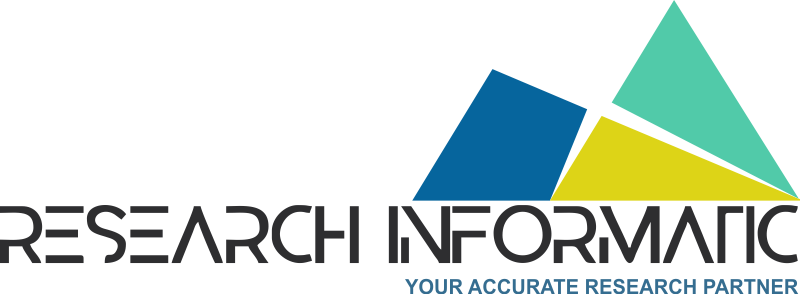
Green Hydrogen Market Size, Share & Trends Analysis Report by Technology (Proton exchange membrane electrolyzer, Alkaline electrolyzer, Solid oxide electrolyzer) By Applications (Power Generation, Transport, Others) By End-Use (Food & beverages, Medical, Chemical, Petrochemicals, Glass, Others) By Geography (North America, Europe, Asia-Pacific, South America, RoW) Forecast till 2028
Categories: Agriculture | Format : 
Global Green Hydrogen Market Overview
The Global Green Hydrogen Market size is estimated to reach $8.01 billion by 2028, growing at a CAGR of 43.3% over the forecast period of 2022-2028. Green hydrogen is hydrogen produced solely from renewable energy sources. Green hydrogen emits much less carbon dioxide than grey hydrogen, made from natural gas steam reforming and accounts for 95% of the market. Green hydrogen, created from renewable energy sources like the sun and wind, has much promise for meeting the world's future energy needs. Green hydrogen's economics, on the other hand, is now challenging, owing to the wide range of essential costs and availability of renewable energy sources.
Impact of COVID-19:
The pandemic of Covid-19 has no negative impact on the global green hydrogen market. During the epidemic, however, demand for green hydrogen fell. Many governments worldwide enforced stringent restrictions and lockdown regulations to prevent the virus from spreading, causing delays and interruptions in commercial operations. Furthermore, the demand for products, raw resources, and manufacturing facilities dampened goods and services. Additionally, the automotive industry has experienced a shortage of raw materials for manufacturers. On the other hand, government actions are projected to raise Green Hydrogen demand following the COVID-19 pandemic.
Key Takeaways from Global Green Hydrogen Market Report:
- Evaluate market potential through analyzing growth rates (CAGR %), Volume (Units), and Value ($M) data given at country level – for technology, applications, end-users, and by different industry verticals. Understand the various market dynamics – key driving factors, challenges, and hidden opportunities.
- Get in-depth insights on your competitor's performance – market shares, strategies, financial benchmarking, product benchmarking, SWOT, and more.
- Analyze the sales and distribution channels across key geographies to improve top-line revenues.
- Understand the industry supply chain with a deep dive on the value augmentation at each step to optimize value and bring efficiencies in your processes.
- Get a quick outlook on the market entropy – M&As, deals, partnerships, product launches of all key players for the past four years.
- Evaluate the supply-demand gaps, import-export statistics, and regulatory landscape for more than the top 20 countries globally for the market
By technology, the Proton exchange membrane(PEM) electrolyzer Segment market will grow at the highest CAGR during the forecast period.
The alkaline electrolyzer accounted for the most income in 2020, as it is the most common technique utilized in green hydrogen projects. The alkaline electrolyzer has a longer operating time than PEM electrolyzers since it employs a liquid alkaline solution of potassium or sodium hydroxide as its electrolyte. Furthermore, alkaline electrolyzers are less expensive than PEM electrolyzers, boosting the segment's potential growth. However, with a 100 - 105 degrees Celsius working temperature range, alkaline electrolyzers have lower power and current densities than PEM electrolyzers, which operate at 70 - 90 degrees Celsius. Over the projected period, the PEM electrolyzer segment is expected to increase at the fastest rate of 44.3% over the period 2021-2028. Compared to the alkaline equivalent, the PEM electrolyzer has more functional flexibility due to solid specialized plastic material-based electrolytes. Additionally, the segment's expansion will be aided by decreased gas permeability and thickness of proton exchange membranes and the reliable proton conductivity of these electrolyzers.
North America to account for the largest market share during the forecast period.
Due to massive expenditures by European economies striving for an energy transition into a clean, hydrogen-based economy, Europe led the worldwide market in 2020 and accounted for the most significant revenue share of nearly 57%.
North America is expected to proliferate over the forecast period, with the United States and Canada leading the region thanks to renewable energy regulations. California has most of the market share in the United States, with growth fueled by aggressive de-carbonization goals, including phasing out gas or diesel-powered public buses by 2040.
Market Dynamics
Driver: Increase demand for Green Hydrogen is driving the Green Hydrogen Market.
Green hydrogen has been in great demand in the latest years due to reducing carbon emissions. It also contributes to meeting the world's growing demand for energy. In addition, green hydrogen is a sustainable energy source. As a result, green hydrogen adoption is expected to increase soon.
Challenge: Sustainability in the environment is restraining market growth.
Currently, practically all hydrogen produced globally is "grey," meaning it comes from natural gas. Grey hydrogen is cheap ($2 to $4 per kilogram) since there is no price on carbon emissions, but it exacerbates the problem of environmental sustainability. Green hydrogen, on the other hand, makes use of renewable energy to power electrolysis, which separates water molecules into hydrogen and oxygen. As a result, green hydrogen is a superior long-term approach to assist economies in decarbonizing because it does not require fossil fuels. On the other hand, green hydrogen is more expensive than grey hydrogen, with prices ranging from $4 to $9 per kilogram in some areas.
Key Market Players
Prominent Key Players in the Global Green Hydrogen Market consist of Linde; Air Liquide; Air Products and Chemicals, Inc.; Engie; Uniper SE; Siemens, Green Hydrogen, Hydrogenics; Toshiba Energy Systems & Solutions Corp.; Nel ASA, among others.
Developments
In April 2020, Green hydrogen was in high demand in recent years due to its ability to reduce carbon emissions. It also contributes to meeting the world's growing demand for energy. In addition, green hydrogen is a sustainable energy source. As a result, green hydrogen adoption is expected to increase soon.
Report Coverage and Scope
The report "Global Green Hydrogen Market" by Research Informatic covers an in-depth detailed analysis for the following segment covered under a scope.
By Technology
- Proton exchange membrane electrolyzer
- Alkaline electrolyzer
- Solid oxide electrolyzer
By Applications
- Power generation
- Transport
- Others
By End-Use
- Food & beverages
- Medical
- Chemical
- Petrochemicals
- Glass
- Others
By Geography
- North AmericEurope
- APAC
- RoW
Global Green Hydrogen Market Growth, Trend and Forecast 2022-2028
Chapter 1 Green Hydrogen Market Overview
1.1 Product Overview and Scope of Green Hydrogen
1.2 Green Hydrogen Market Segmentation by Technology
1.2.1 Global Green Hydrogen Market Share of Green Hydrogen by Technology in 2022
1.2.2 Proton exchange membrane electrolyzer
1.2.3 Alkaline electrolyzer
1.2.4 Solid oxide electrolyzer
1.3 Green Hydrogen Market Segmentation by Application
1.3.1 Power generation
1.3.2 Transport
1.3.3 Others
1.4 Green Hydrogen Market Segmentation by End-Use
1.4.1 Food & beverages
1.4.2 Medical
1.4.3 Chemical
1.4.4 Petrochemicals
1.4.5 Glass
1.4.6 Others
1.5 Green Hydrogen Market Segmentation by Regions
1.5.1 North America
1.5.2 China
1.5.3 Europe
1.5.4 Southeast Asia
1.5.5 Japan
1.5.6 India
1.5.7 Global Market Size (Value) of Green Hydrogen (2015-2028)
Chapter 2 Global Economic Impact on Green Hydrogen Industry
2.1 Global Macroeconomic Environment Analysis
2.1.1 Global Macroeconomic Analysis
2.1.2 Global Macroeconomic Environment Development Trend
2.2 Global Macroeconomic Environment Analysis by Regions
Chapter 3 Global Green Hydrogen Market Competition by Manufacturers
3.1 Global Green Hydrogen Production and Share by Manufacturers (2021 and 2022)
3.2 Global Green Hydrogen Revenue and Share by Manufacturers (2021 and 2022)
3.3 Global Green Hydrogen Average Price by Manufacturers (2021 and 2022)
3.4 Manufacturers Green Hydrogen Manufacturing Base Distribution, Production Area and Product Type
3.5 Green Hydrogen Market Competitive Situation and Trends
3.5.1 Green Hydrogen Market Concentration Rate
3.5.2 Green Hydrogen Market Share of Top 3 and Top 5 Manufacturers
3.5.3 Mergers & Acquisitions, Expansion
Chapter 4 Global Green Hydrogen Production, Revenue (Value) by Region (2015-2022)
4.1 Global Green Hydrogen Production by Region (2015-2022)
4.2 Global Green Hydrogen Production Market Share by Region (2015-2022)
4.3 Global Green Hydrogen Revenue (Value) and Market Share by Region (2015-2022)
4.4 Global Green Hydrogen Production, Revenue, Price and Gross Margin (2015-2022)
4.5 North America Green Hydrogen Production, Revenue, Price and Gross Margin (2015-2022)
4.6 Europe Green Hydrogen Production, Revenue, Price and Gross Margin (2015-2022)
4.7 China Green Hydrogen Production, Revenue, Price and Gross Margin (2015-2022)
4.8 Japan Green Hydrogen Production, Revenue, Price and Gross Margin (2015-2022)
4.9 Southeast Asia Green Hydrogen Production, Revenue, Price and Gross Margin (2015-2022)
4.10 India Green Hydrogen Production, Revenue, Price and Gross Margin (2015-2022)
Chapter 5 Global Green Hydrogen Supply (Production), Consumption, Export, Import by Regions (2015-2022)
5.1 Global Green Hydrogen Consumption by Regions (2015-2022)
5.2 North America Green Hydrogen Production, Consumption, Export, Import by Regions (2015-2022)
5.3 Europe Green Hydrogen Production, Consumption, Export, Import by Regions (2015-2022)
5.4 China Green Hydrogen Production, Consumption, Export, Import by Regions (2015-2022)
5.5 Japan Green Hydrogen Production, Consumption, Export, Import by Regions (2015-2022)
5.6 Southeast Asia Green Hydrogen Production, Consumption, Export, Import by Regions (2015-2022)
5.7 India Green Hydrogen Production, Consumption, Export, Import by Regions (2015-2022)
Chapter 6 Global Green Hydrogen Production, Revenue (Value), Price Trend by Type
6.1 Global Green Hydrogen Production and Market Share by Type (2015-2022)
6.2 Global Green Hydrogen Revenue and Market Share by Type (2015-2022)
6.3 Global Green Hydrogen Price by Type (2015-2022)
6.4 Global Green Hydrogen Production Growth by Type (2015-2022)
Chapter 7 Global Green Hydrogen Market Analysis by Application
7.1 Global Green Hydrogen Consumption and Market Share by Application (2015-2022)
7.2 Global Green Hydrogen Consumption Growth Rate by Application (2015-2022)
7.3 Market Drivers and Opportunities
7.3.1 Potential Applications
7.3.2 Emerging Markets/Countries
Chapter 8 Green Hydrogen Manufacturing Cost Analysis
8.1 Green Hydrogen Key Raw Materials Analysis
8.1.1 Key Raw Materials
8.1.2 Price Trend of Key Raw Materials
8.1.3 Key Suppliers of Raw Materials
8..4 Market Concentration Rate of Raw Materials
8.2 Proportion of Manufacturing Cost Structure
8.2.1 Raw Materials
8.2.2 Labor Cost
8.2.3 Manufacturing Expenses
8.3 Manufacturing Process Analysis of Green Hydrogen
Chapter 9 Industrial Chain, Sourcing Strategy and Downstream Buyers
9.1 Green Hydrogen Industrial Chain Analysis
9.2 Upstream Raw Materials Sourcing
9.3 Raw Materials Sources of Green Hydrogen Major Manufacturers in 2022
9.4 Downstream Buyers
Chapter 10 Marketing Strategy Analysis, Distributors/Traders
10.1 Marketing Channel
10.1.1 Direct Marketing
10.1.2 Indirect Marketing
10.1.3 Marketing Channel Development Trend
10.2 Market Positioning
10.2.1 Pricing Strategy
10.2.2 Brand Strategy
10.2.3 Target Client
10.3 Distributors/Traders List
Chapter 11 Market Effect Factors Analysis
11.1 Technology Progress/Risk
11.1.1 Substitutes Threat
11.1.2 Technology Progress in Related Industry
11.2 Consumer Needs/Customer Preference Change
11.3 Economic/Political Environmental Change
Chapter 12 Global Green Hydrogen Market Forecast (2022-2028)
12.1 Global Green Hydrogen Production, Revenue Forecast (2022-2028)
12.2 Global Green Hydrogen Production, Consumption Forecast by Regions (2022-2028)
12.3 Global Green Hydrogen Production Forecast by Type (2022-2028)
12.4 Global Green Hydrogen Consumption Forecast by Application (2022-2028)
12.5 Green Hydrogen Price Forecast (2022-2028)
Chapter 13 Appendix
FAQ

Published On:May 2022
Base Year:2021
Historical Data:2018 - 2020
No of Pages:250
Choose License Type
Personalize this Research
- Market Size and Share from 2016 - 2027
- Expected Market Growth Until 2027
- COVID-19 Impact assessment on the market
- Market Dynamics and Impact Analysis
- Segment and region that will drive or lead the market growth and why
- Industry activity comprising Mergers, Acquisitions, Expansion, etc.
- Comprehensive Mapping of the Competitive Landscape
- In-depth analysis of key sustainability strategies adopted by market players
- Global and regional market trends – Current and Future
- Value Chain Analysis
- Porters Five Forces Analysis
- Historical and Current Product Pricing
- Country Cross-Segment Analysis
- Company Profiling
- Player Comparison Matrix
Agriculture Clients
Green Hydrogen Market Size, Share & Trends Analysi...
RD Code : AG22



